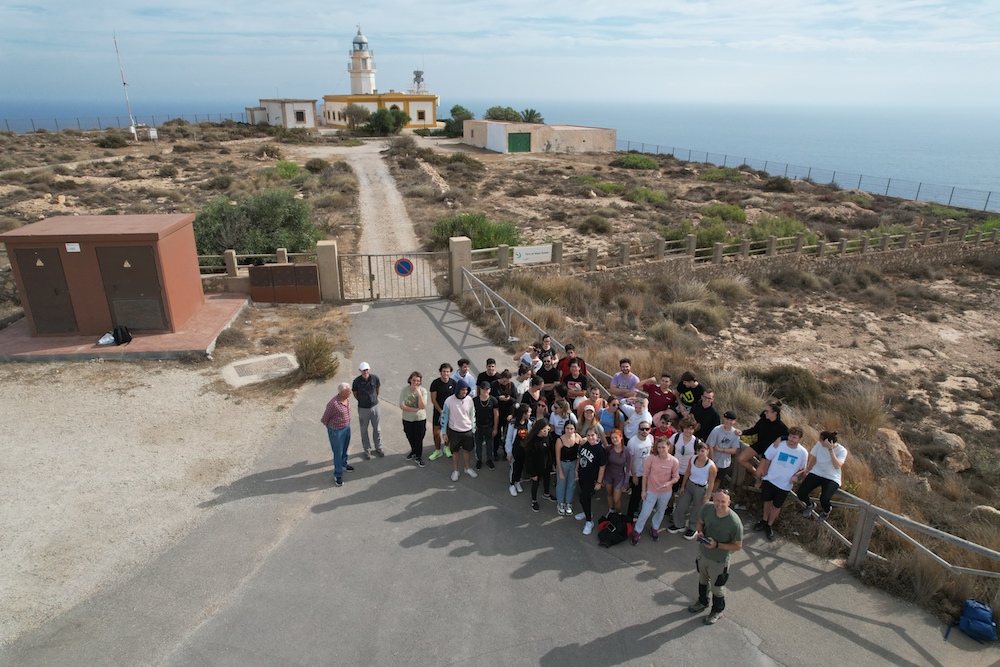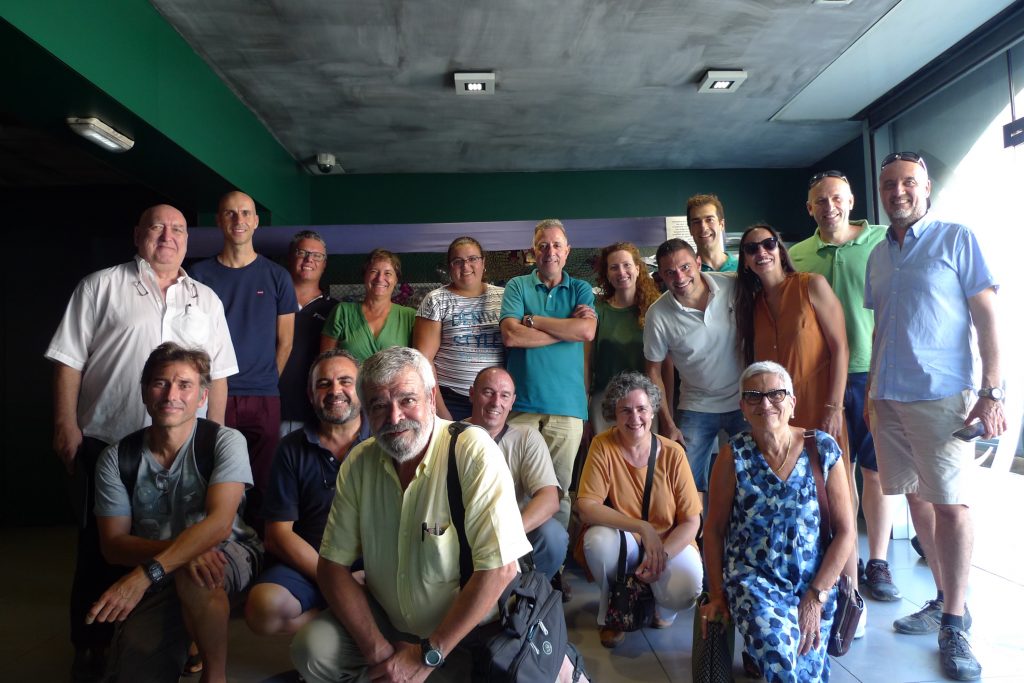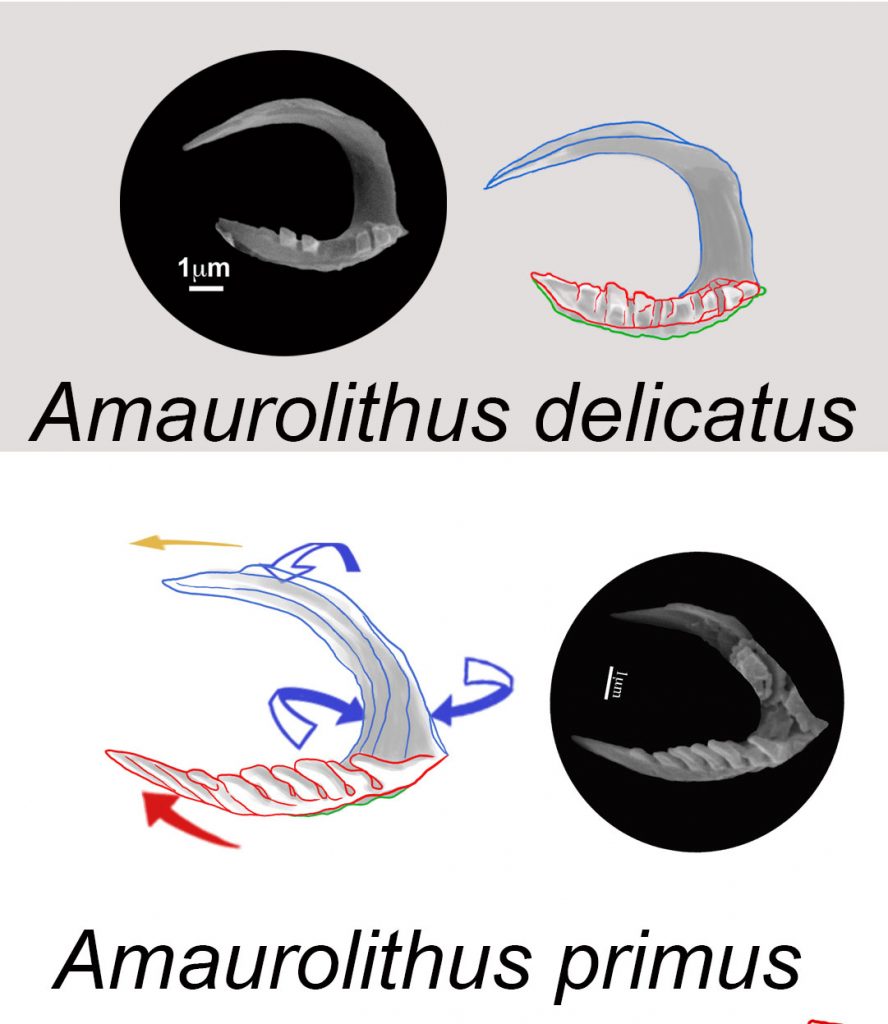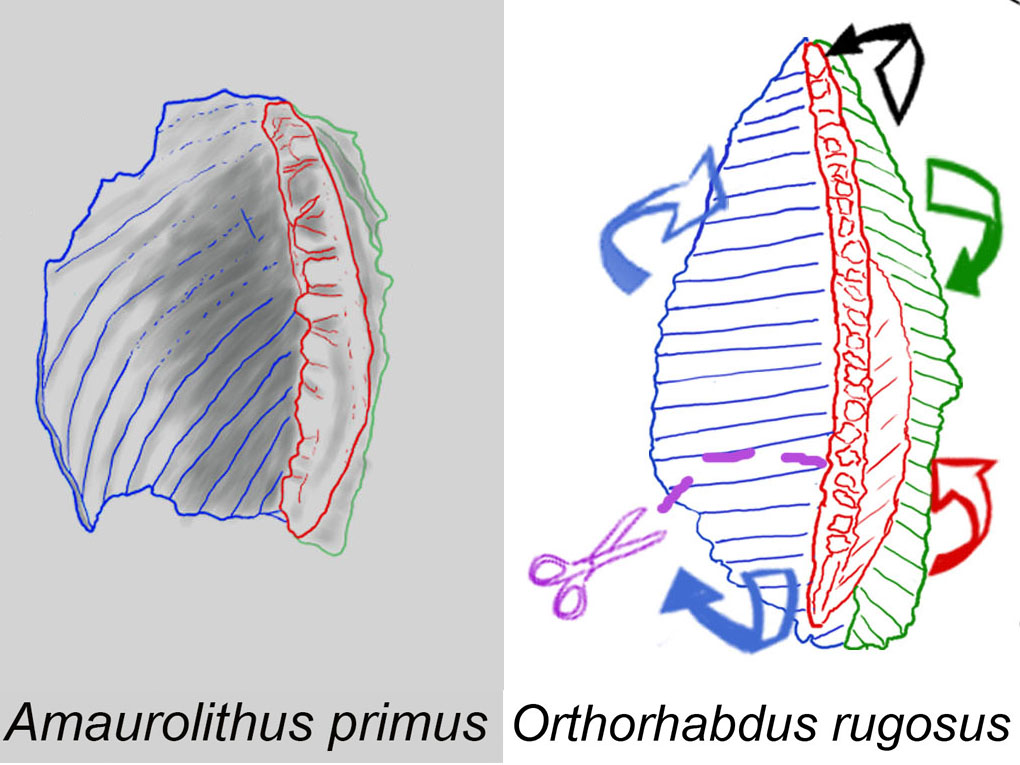Home » 2022
Yearly Archives: 2022
Field trip to Faro de Rondan (Almería)
This year the students of the third course of Marine sciences of the Alicante University visit the Sorbas basin, Cabo de Gata, and Mesa de Roldán on November 3th and 4th of 2022.

The picture show the student visiting the Faro de la Mesa de Roldan (the lighthouse).
The professors of the subject were Antonio Estévez, Manuel Martín-Martín and José Enrique Tent-Manclús.
Thinkinazul meeting in Calpe
Last september 16th 2022 in the IMEDMAR facilities of the Universitat Católica de Valencia took place the first meeting of the WP1 of the Thinkinazul project.
The meeting did not start quite well because 3 days before the meeting a fire destroyed the entrance of the building so it had to be moved to the Calpe Nautic Club, Belliure brothers meeting room. It was our first meeting, our kicking point trying to find synergies with the different subgroups.

Evolution of Amaurolithus: Amaurolithus delicatus marking the Messinian bottom
After a complete study of the sediment samples from Ocean Drilling Program (ODP) Sites 999 and 1237 in the Caribbean Sea and Eastern Pacific Ocean in order to monitor the evolution of ceratoliths. The First Occurrence of Amaurolithus delicatus marks the bottom of the Messinian Stage. The first ceratholith, A. primus, has two arms and a horseshoe shape with marked laths, and is stable and concave upwards having three blades (sinistral=blue, median=red, and dextral= green).
Early robust A. primus evolved into stylised forms and then to Amaurolithus delicatus (7.226 Ma), an almost plain horseshoe ceratolith with two arms. The left arm, usually the longer one, comes from the sinistral wing of A. primus and has a characteristic flattened omega section (Ω) without laths. There is a distribution overlap between A. primus and A. delicatus; the highest occurrence of the first one, at 6.282 Ma, is a newly proposed bioevent for the Messinian. After this, Amaurolithus does not have laths on its longer left arm and should be included in A. delicatus.

Cite as: Lancis, C., Tent-Manclús, J.-E., Flores, J.-A., 2022. Origin and evolutionary trends of the Neogene genera Amaurolithus and Nicklithus (calcareous nannofossils). Mar. Micropaleontol. 175, 102156. https://doi.org/https://doi.org/10.1016/j.marmicro.2022.102156
Origin of the ceratolith genus Amaurolithus
Sediment samples from Ocean Drilling Program (ODP) Sites 999 and 1237 in the Caribbean Sea and Eastern Pacific Ocean were studied to monitor the evolution of ceratoliths from 7.4 Ma to 6 Ma. Orthorhabdus rugosus shows high variability at the end of the Tortonian to the Early Messinian (7.35 Ma to 6.91 Ma), resulting in the Amaurolithus (7.354 Ma) and Nicklithus branches (6.985 Ma). Orthorhabdus rugosus is an ortholith with three blades (sinistral, median, and dextral). The first ceratholith, A. primus, has two arms and a horseshoe shape with marked laths, and is stable and concave upwards. Its sinistral arm is formed from the sinistral blade of Orthorhabdus rugosus and the right arm is formed from the other blades.
The sudden appearance of A. primus in the sedimentary record at around 7.35 Ma was observed in both studied sections . The Figure shows the set modifications of O. rugosus producing the early A. primus. The modifications are not a gradual evolutionary sequence of intermediate progressively modified forms but occur simultaneously as they are present from the beginning of the first recorded specimens. Amaurolithus primus coexisted with the O. rugosus ancestor in the studied samples.

Cite as: Lancis, C., Tent-Manclús, J.-E., Flores, J.-A., 2022. Origin and evolutionary trends of the Neogene genera Amaurolithus and Nicklithus (calcareous nannofossils). Mar. Micropaleontol. 175, 102156. https://doi.org/https://doi.org/10.1016/j.marmicro.2022.102156
Thinkinazul project
Messinian Group will study the recent marine sediment on the Alicante coast. The new EU funded Thinkinazul project of the Generalitat Valenciana, coded as: GVA/Thinkinazul/2021/039.
The project will study changes in the coast-line, coastal risk and coastal aquifers. It has started on January 1, 2022 and will be active until November 18, 2024. The advances of the research will be announced in future posts of this blog. The leadership of the project is carried out by researches of the MIES is a Multidisciplinary Research Institute for Environmental Studies “Ramón Margalef” (Instituto Multidisciplinario para el estudio del Medio “Ramon Margalef”, IMEM in Spanish) of the Alicante University and integrate researches of 10 universities and research institutions.
Generalitat Valenciana Thinkinazul Project “aquaCHANGE” have been divided in 7 Working Party (WP) and framed in WP1: “Observation and monitoring of the marine and coastal environment”.


Recent Comments